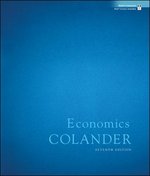Question
1.- If the producer increases total cost: a.- shifts parallel inward from the original isocost line. b.- shifts parallel outward from the original isocost line.
1.- If the producer increases total cost:
a.- shifts parallel inward from the original isocost line.
b.- shifts parallel outward from the original isocost line.
c.- rotates outward on the capital axis.
d.- rotates inward on the labor axis.
2.-If the producer increases total cost:
a.-nothing happens with th slope.
b.- the slope of the isocost increases.
c.- the slope of the isocost decreases.
d.- the slope of the isoquant increases.
3.-If the price per unit of capital increase, then:
a.- Isocost line rotates in the labor axis, decreasing in the capital axis and the slope.
b.- Isoquant curve rotates in the labor axis, increasing in the capital axis, and the slope decreases.
c.- soquant curve rotates in the capital axis, decreasing in the labor axis and the slope.
d.- Isocost line rotates in the capital axis, increasing capital axis and the slope.
4.- The least costly way to produce any given level of output is indicated by the
a.- point of intersection between the isoquant corresponding to that level of output and the Xaxis.
b.- point of intersection between the isoquant corresponding to that level of output and the Yaxis
c.- point of tangency between an isocost line and the isoquant corresponding to that level of output.
d.- isocost line corresponding to that level of output.
Step by Step Solution
There are 3 Steps involved in it
Step: 1

Get Instant Access to Expert-Tailored Solutions
See step-by-step solutions with expert insights and AI powered tools for academic success
Step: 2

Step: 3

Ace Your Homework with AI
Get the answers you need in no time with our AI-driven, step-by-step assistance
Get Started


